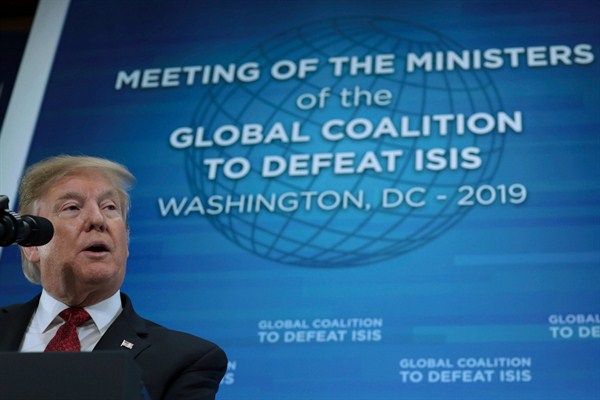During his presidential bid, Donald Trump hammered on about the threat posed to America by the self-styled Islamic State, and how he would defeat it. As an issue, it was perfect for him, since the Islamic State’s sociopathic brutality fueled fear and anger among his core supporters—emotions that candidate Trump was able to harness and use to his benefit. Although the Islamic State emerged from the insurgency in Iraq that was unleashed by the American invasion in 2003, the extremist group grew more powerful during President Barack Obama’s administration, so Trump could wield it as a political weapon against Obama and Hillary Clinton. Trump went so far as to label Obama “the founder of ISIS” and Clinton “the co-founder.” However absurd the claim, it drew cheers.
Trump talked about the Islamic State constantly on the campaign trail, asserting that he would “knock the hell out of it.” As president, he has done just that, easing the rules of engagement and expanding the U.S. bombing campaigns in Iraq, Syria and Afghanistan. By February, Trump was able to announce that “the ISIS caliphate has been decimated.” But the key word is “caliphate.”
As Daniel DePetris pointed out recently in The National Interest, “it would be a significant error to assume that the physical destruction of the caliphate is the same as the destruction of the Islamic State as a terrorist movement.” It may be down, DePetris added, “but it is not out.” Yet there is no sign that Trump grasps this reality or has a plan to deal with a rapidly evolving extremist movement.

